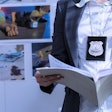Dear DrBicuspid Member,
In a story that has attracted international attention, a team of researchers from the Guangzhou Institute of Biomedicine and Health recently reported that they had successfully grown teeth out of stem cells found in human urine and implanted in mice kidneys, possibly leading to a unique way to regenerate dental structures. Read more.
Meanwhile, dental researchers are making progress in their quest to develop a magnetic resonance imaging (MRI) device that can be used chairside for hard- and soft-tissue analysis and diagnosis. Scientists from the University of Minnesota Center for Magnetic Resonance Research have been working to optimize the MR signal from the teeth and supporting structures -- an important step in improving overall image resolution.
Click here to read more about their most recent study, which overcame some inherent challenges by utilizing a copper loop in the occlusal plane.
Finally, in the early days, dental implants were an inconsistent and unproven treatment option. But that didn't deter Paul Schnitman, DDS, MSD, from learning everything he could about them -- particularly those involving the Brånemark method. Still, it took an inquisitive patient for him to place his first screw-type implants in 1983. Now 30 years later, those same implants are still going strong. Read more about Dr. Schnitman's pioneering work and that patient, Elizabeth Scotland, in this latest Restoratives Community exclusive.















